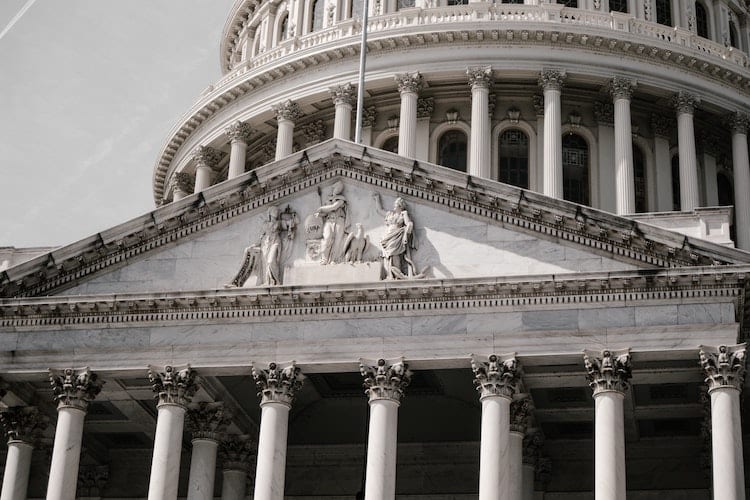What’s the Status of Coronavirus Stimulus This Month?

Since March, politicians have largely been missing in action in the fight against COVID-19. After passing a $2.2 trillion stimulus package in March, no significant progress has been made in extending or expanding the relief measures set out in the CARES Act. This year has been a long series of patchwork legislation, half measures, and poor governance.
While Americans may see more relief after President-Elect Joe Biden takes office, that may be too little, too late. Millions of Americans need some form of help soon, but many government programs and protections expire at the end of the year.
Here’s where things stand now with some major areas of COVID relief, and what to expect in the coming weeks.
Unemployment
Tens of millions of Americans have faced joblessness at some point during the pandemic. The federal government created two unemployment programs at the start of the pandemic, and both have provided a critical lifeline to out of work Americans. Not only does losing your job cost you income, it often costs you your insurance too, deepening the crisis.
As it stands today, roughly 12 million Americans are still getting pandemic unemployment relief checks according to the Century Foundation. However, these programs expire on December 26th. Afterward, without further federal or state aid, jobless Americans could be left without income streams until the job market – which is still down 10 million jobs since March – fully rebounds.
The most recently proposed relief bill, a stripped-down $908 billion stimulus package, offers an additional $300 per week of unemployment pay for up to four more months. The legislation would be a much-needed move for Americans who cannot find work, but it’s still unclear if any relief measures at all will be passed before the holidays.
Student Loans
In March, the federal government announced a freeze on federal student loan payments. That freeze has been modified and extended multiple times, and currently is set to expire at the end of January 2021. That means, relatively speaking, student borrowers are in a decent position.
The roughly 41 million Americans with outstanding federal student loans will still have 0 percent interest rates and no mandatory payments. One proposed stimulus bill would extend this freeze through the end of April and provide additional federal funding for rental insurance. Even if nothing gets done this year, the incoming Biden administration has signaled interest in extending this freeze, plus introducing some level of loan forgiveness. The former is far more likely, but regardless, student borrowers will be protected through at least January 31st.
Housing
Much like the looming unemployment situation, protections for renters expire at the end of the year. As a result, millions of Americans who haven’t been able to make rent throughout the pandemic could be homeless by 2021. The CDC and the Trump Administration enacted an eviction moratorium in September, but it expires on December 31st. According to the Washington Post, tens of millions could be facing eviction soon as a result.
A handful of states have their own eviction freezes, but only three (Kansas, New Jersey, and Vermont) extend protections past January 1st. According to Census data, more than 11 million Americans have little to no confidence that they can pay rent on time. That number has only increased in recent weeks, and will likely continue to do so.
Many states are considering extending or enacting their own eviction moratoriums. While this would obviously be a step in the right direction, millions may still end up homeless without federal intervention. Even with a federal eviction moratorium in place, there is plenty of pushback against freezes. Without the CDC and White House endorsing an eviction freeze, who knows what could play out.
Individual Checks
The $1,200 stimulus check was arguably the central piece of the CARES Act. Direct payments to Americans proved to be a critical lifeline amid terrible economic conditions, conditions that have not drastically improved for many. Yet no legislation with any real traction includes further stimulus checks for citizens, regardless of income level.
House Speaker Nancy Pelosi (D-CA) is pushing the $908 billion package mentioned above, which includes many relief measures but no direct payments. Senate Majority Leader Mitch McConnell (R-KY) has remained steadfast on his commitment to a “targeted” stimulus, a $500 billion package with no unemployment extension or stimulus checks.
Some lawmakers on both sides of the aisle, including Senators Josh Hawley (R-MO) and Bernie Sanders (I-VT), have said they will only support a relief bill if it includes individual checks. Still, the idea remains unpopular in Washington, and even supporters like Hawley and Sanders may be forced to pass a smaller deal than they’d like, or pass no relief at all.
The Bottom Line
All in all, there’s a lot of uncertainty. Many critical programs are set to expire in the next few weeks or months, and there’s no concrete replacement, extension, or solution. Considering the needle hasn’t moved at all since March, it’s hard to be optimistic about the state of stimulus negotiations.
If anything is going to be passed before 2021, it’ll need to come by December 18th. The Senate goes on recess until the end of the year after the 18th, and there are concerns of a government shutdown starting that same day.
For now, those dealing with unemployment or struggling to pay rent – two groups that often overlap – are in danger of losing the relief they rely on to get by. Time will tell if anything changes.









